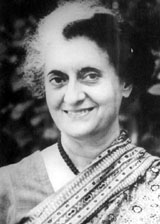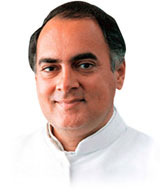Lal Bahadur Sastri succeeded Nehru as the next Prime Minister of India. He remained a role model for honesty in public life. He ended the Indo-Pak war of 1965 by concluding the Tashkent Agreement in January 1966. His untimely death was a great loss to the nation.
 |
| ndira Gandhi |
1966 ஆம்
Indira Gandhi, daughter of Nehru became Prime Minister in 1966 and bravely faced the domestic challenges such as scarcity of food and foreign pressures during the 1971 Bangladesh crisis. When opposition to her rule gathered momentum in 1975, she brought emergency rule, a black mark in the democratic tradition of India. However, she restored democratic rule by announcing general elections in 1977 in which she was defeated.
 |
| Morarji Desai |
Later in 1980 she was able to regain power by democratic means. In 1983 she undertook “Blue Star Operation” in the Golden Temple at Amritsar - Punjab. As a result, unfortunately, she was shot dead by her own bodyguards in 1984 as a vengeance to her policy towards Punjab militancy.
 |
| Rajiv Gandhi |
The Janata Party rule for brief period between 1977 and 1980 brought Morarji Desai as Prime Minister of India. For the first time a non-Congress ministry was formed after independence. The lack of unity among the Janata leaders had resulted in the fall of the Janata Government.
Rajiv Gandhi became the Prime Minister of India in 1984 after her mother Indira Gandhi’s assassination. He introduced New Education Policy and encouraged foreign investment. In 1987 he sent the Indian Peace Keeping Force to Sri Lanka with a view to put an end to the ethnic violence. He continued as Prime Minister till the next elections held in 1989. Later in May 1991, he was assassinated (by the Sri Lankan Tamil extremists).




